CBSE Class 9 Hindi 2025: Hindi is one of the main subjects for students studying in CBSE Class 9. The Central Board of Secondary Education...

CBSE Class 9 Hindi 2025: Download Syllabus PDF
February 24, 2025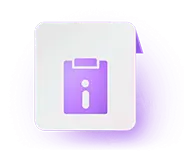
The Goa Board of Secondary and Higher Secondary Education (GBSHSE) is the state education board of Goa, established to provide and improve secondary and higher secondary education in schools affiliated with the Goa state board. The Goa, Daman, and Diu Secondary and Higher Secondary Education Board Act of 1975 established the board. The GBSHSE holds the Class 9 examination every year in March or April.
The sole authority in charge of administering the Goa Board 9th Class Examination and publishing the Goa Board Syllabus Class 9 on its official website is the Goa Board of Secondary and Higher Secondary Education (GBSHSE). The Goa Board Class 9 exam is a school-level exam, and students must carefully review the syllabus to prepare for it. The Goa Board Class 9 examinations are held in two terminals.
The Goa Board Class 9 exam is a non-board exam. The final exam is conducted internally by schools. All the schools follow the syllabus set by GBSHSE. Students need to prepare for the exam from their school books. They do not need to study any additional topics outside the syllabus. Below we know more about Goa Board Class 9, check the table below to get a brief of the Goa Board 9th exam:
| Particulars | Details |
|---|---|
| Name of the Board | Goa Board of Secondary & Higher Secondary Education (GBSHSE) |
| Class | Class 9 |
| Exam Date | March/April 2025 |
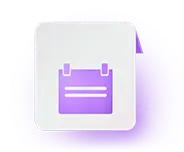
Students must prepare themselves in accordance with the GBSHSE Board’s or the respective school authority’s syllabus. Begin planning your study strategy at the start of the session by reviewing the syllabus. Students can start their exam preparation with chapters that they find difficult. It will help them build a strong understanding in the concepts and have time to practice questions based on them.
Mathematics is one of the most difficult subjects in the Goa Board Class 9 curriculum. To get a good grade in Mathematics, you must first understand the fundamentals of the concepts. To do so, go through the Goa Board Class 9 Mathematics chapters in the table below:
| Chapter No. | Chapters for Mathematics |
|---|---|
| 1 | Number System |
| 2 | Polynomials |
| 3 | Coordinate Geometry |
| 4 | Linear Equation in Two Variables |
| 5 | Introduction to Euclid’s Geometry |
| 6 | Lines and Angles |
| 7 | Triangles |
| 8 | Quadrilateral |
| 9 | Area of Parallelogram and Triangles |
| 10 | Circles |
| 11 | Constructions |
| 12 | Heron’s Formula |
| 13 | Surface Areas and Volumes |
| 14 | Statistics |
| 15 | Probability |
Students must fully understand all of the chapters covered in this subject to pass the exam. Here is a list of Goa Board Class 9 Science chapters to help students with their students and score good marks in the exam:
| Chapter No. | Chapters for Science |
|---|---|
| 1 | Matter in Our Surroundings |
| 2 | Is Matter Around Us Pure? |
| 3 | Atoms and Molecules |
| 4 | Structure of the Atom |
| 5 | The Fundamental Unit of Life |
| 6 | Tissues |
| 7 | Diversity in Living Organisms |
| 8 | Motion |
| 9 | Force and Law of Motion |
| 10 | Gravitation |
| 11 | Work and Energy |
| 12 | Sound |
| 13 | Why Do We Fall Ill? |
| 14 | Natural Resources |
| 15 | Improvement in Food Resources |
Social Science is an important subject for Goa Board Class 9. The subject is further subdivided into Geography, Civics, and History. The Social Sciences chapters are listed in the table below for your convenience:
| Chapter No. | Chapters for Social Science |
|---|---|
| 1 | The French Revolution |
| 2` | Socialism in Europe and the Russian Revolution |
| 3 | Nazism and the Rise of Hitler |
| 4 | Forest Society and Colonialism |
| 5 | Pastoralist in Modern World |
| 6 | India- Size and Location |
| 7 | Physical Features of India |
| 8 | Drainage |
| 9 | Climate |
| 10 | Natural Vegetation and Wildlife |
| 11 | Population |
| 12 | What is Democracy? Why Democracy? |
| 13 | Constitutional Design |
| 14 | Electoral Politics |
| 15 | Working of Institutions |
| 16 | Democratic Rights |
| 17 | The Story of Village Palampur |
| 18 | People as Resource |
| 19 | Poverty as Challenge |
| 20 | Food Security in India |

The authority will conduct Goa Board Class 9 exam tentatively on Feb or March 2025. However, the Goa Board Class 9 exams are conducted at the school level, so students should contact their school authorities to know about the exam dates.
Goa Board Class 9 admit card will be released two to three weeks before the exam. Admit card includes all the details such as the name of the candidate, venue of the examination, date, and other details.
Students must carry the admit card to the exam hall as it is an important document that needs to be carried to the examination centre.
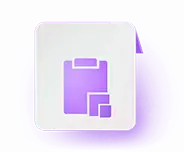
Class 9 is an important milestone in a student’s academic career since it serves as a foundation for subsequent classes. In 9th grade, students learn the fundamentals of subjects, which they will study in higher classes.
As a result, to earn a good mark in high school, you must have a basic understanding and knowledge of the topics.
In this section, we will list some important tips on how to plan your study while balancing all the things. These tips will surely help you to get good grades in Class 9.
Students often wonder how to rise to the top of their class and deliver outstanding exams. Like those in any other class, students find it difficult to organise a study schedule due to several events occurring at the same time.
To help students with their studies and guide them throughout the exam, we have listed down some of the important points that they must keep in mind while preparing a study plan for the upcoming exams;
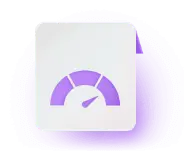
Some of the frequently asked questions on the Goa Board Class 9 exam are as follows:
Q: Who is responsible for releasing the Goa Board Class 9 Syllabus 2025?
Ans: The Goa Board of Secondary and Higher Secondary Education (GBSHSE) publishes the Goa Board Class 9 syllabus 2025.
Q: Where can I take mock tests for Goa Board Class 9 subjects?
Ans: Students can take unlimited mock tests for Goad Board Class 9 subjects on the Embibe app.
Q: What are the subjects for the Goa Board Class 9 exam?
Ans: The Goa Board Class 9 exam subjects are Social Science, Science, Mathematics, and English.
Q: Which chapter in Goa Board Class 9 Science is the most important?
Ans: All of the chapters in Goa Board Class 9 Science are important for the exam. To ace the exams, you must thoroughly study all of the chapters.
Q: What is the number of chapters in the Goa Board Class 9 Maths syllabus?
Ans: The Goa Board Class 9 Maths syllabus consists of 15 chapters.
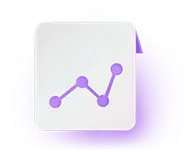
Students must carefully choose which school they want to study as it impacts their overall academic performance. Choosing the right school is a must for students, and to help with that, we have provided a list of school which are the best in the city: Below is the list of some high schools for class 9 students in Goa:
| S. No. | School Name |
|---|---|
| 1 | Kendriya Vidyalaya I.N.S, Mandovi, Verem, Bardez. 403 109. |
| 2 | Kendriya Vidyalaya, Bambolim, Tiswadi. 403 201 |
| 3 | Kendriya Vidyalaya, Ponda. 403 401. |
| 4 | Jawahar Navodaya Vidyalaya, Canacona – Goa. 403 702. |
| 5 | Kendriya Vidyalaya No. 1 Mangor Hill, Vasco, Goa Varunapuri. 403 802. |
| 6 | Kendriya Vidyalaya No. 2 Shantinagar Vasco. 403 802. |
| 7 | Jawahar Navodaya Vidyalaya, Valpoi – Goa. 403 506. |
| 8 | Govt. High School, Agarwada, Pernem. 403 512. |
| 9 | Hutatma Bapu Gawas Memorial Govt. High School, Chandel, Pernem. 403 512 |
| 10 | Govt. High School, Torxem, Pernem. 403 512. |
| 11 | Govt. High School, Gothanwada, Ozari, Pernem. 403 512 |
| 12 | Govt. High School, Menkurem, Bicholim, P.O. Colvale. 403 513. |
| 13 | Govt. High School, Pissurlem, Sattari. 403 506. |
| 14 | Govt. High School, Shigao, Collem, Dharbandora. 403 410. |
| 15 | Late Narendra A. Mayekar, Govt. High School, Headland, Sada, Vasco. 403 804 |
| 16 | Harmal Panchakroshi High School, Harmal, Pernem 403 512. |
| 17 | Our Lady of Mount Carmel High School, Arambol, Pernem 403 524. |
| 18 | Dnyandeep Academy High School, Purva Casarvarnem Pernem. |
| 19 | Dattaram Mantravadi Memorial High School, Mapusa 403 507. |
| 20 | St. Francis Xavier’s High School, Mapusa, Bardez 403 507. |
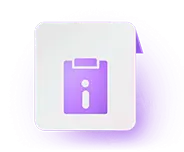
Studying for Goa board Class 9 exams also help students in preparing for other competitive examinations such as: